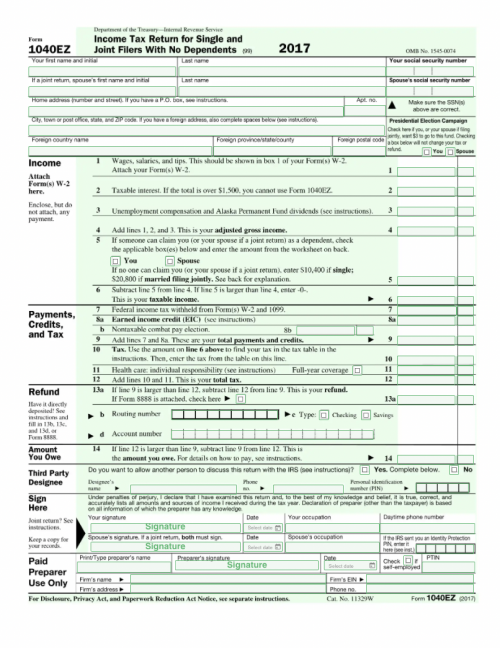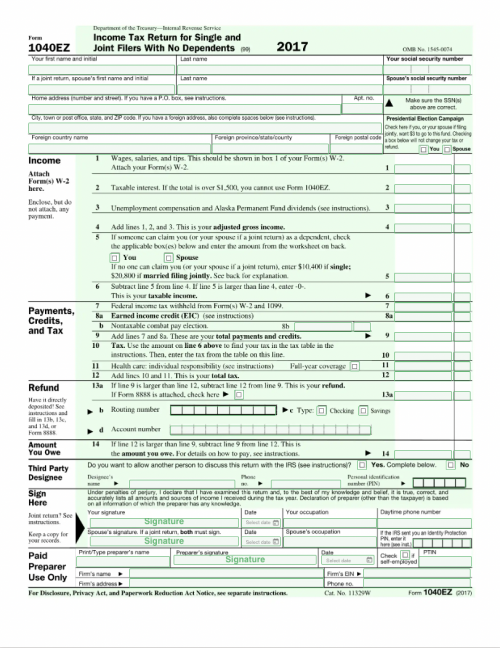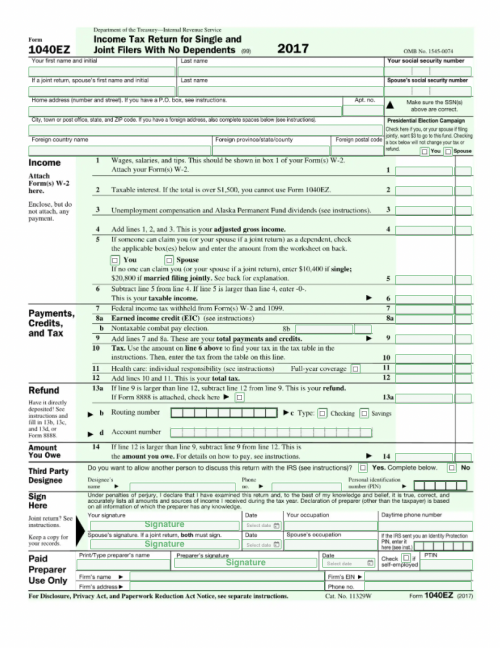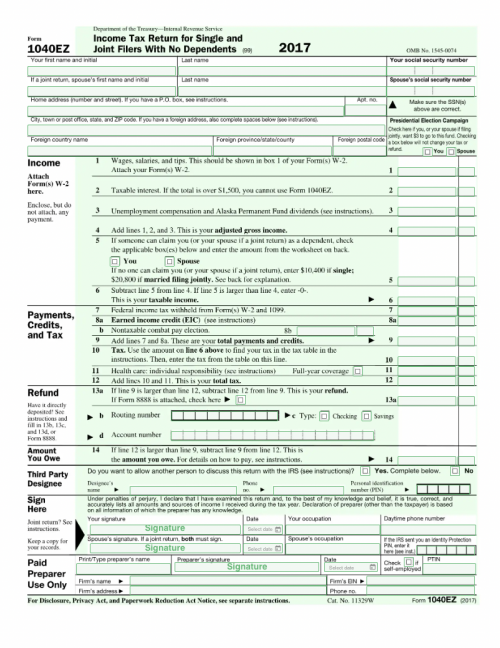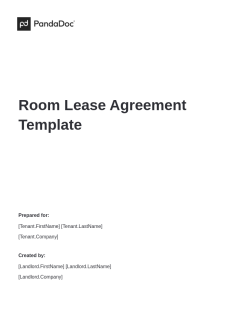Taxes can be very confusing to the uninitiated. Unless you’re a trained accountant or have a struggled through it in the past, the whole process is many people’s idea of hell.
However, it doesn’t have to be as complicated as you may think. If you’re eligible to use the 1040EZ tax form, you can really simplify the whole process for yourself.
Form 1040EZ is a great way to cut out some of the time, effort and stress from filing your tax return, so it’s always worth finding out your filing status and whether you’re eligible or not.
Are you eligible?
You’ll need to make sure you’re eligible if you want to use the 1040EZ to file your income tax return.
For starters, you need to meet the following criteria:
- You must have a taxable income for the tax year of under $100,000.
- You cannot claim dependents on your tax return.
- You must have a taxable interest of under $1,500 for the tax year.
There are some additional criteria that must be met in to qualify for using the 1040EZ, but these are the main ones you need to meet. The ‘no dependents’ requirement is particularly important, as this eliminates many parents that would otherwise be eligible.
Another potentially limiting criteria is whether you receive certain tax credits. If you want to file using a 1040EZ, you can only claim 2 types of the tax credit: the Earned Income, and the Making Work Pay credits. If you’re a recipient of any other types of tax credit, then you cannot use the 1040EZ form to file.
How to fill out the 1040EZ form
Fortunately for the majority of the population who find federal taxes and tax preparation rather perplexing, the 1040EZ form is designed specifically to make the process as easy as possible. It’s generally fairly straightforward to follow, so most users will not have many issues.
However, these are still taxes we’re talking about, so you may well hit a bit of a hurdle at some point.
Here are a few simple things to keep in mind when filling out the form:
- Remember to accurately and fully input your personal information at the beginning of the form. This includes basic details like full name, address, social security number and so on.
- Ensure that you truthfully disclose details like your gross income. When it comes down to it, this is the entire purpose of the form, so you’ll need to disclose any salaries, wages, tips, taxable scholarships/grants (e.g. fellowship grants), unemployment compensation, or Alaska Permanent Fund dividends that you have earned throughout the tax year. If you have received income from any other sources, then you may be ineligible for the 1040EZ and have to instead use the 1040 form.
- You are likely to have already had federal employment taxes, and other types of standard deductions taken from your paycheck throughout the year, so you’ll need to clarify on the form how what your tax situation is, and how much you’ve already paid.
- If you’re eligible for either the Earned Income Credit or the Making Work Pay Credit, make sure you include this information on the form in order to benefit from them.
In general, the 1040EZ instructions are far simpler to follow than those on the more complex 1040 form. Work through the form methodically, take your time, and you should have no problem completing it in a few minutes or less.
Filing the 1040EZ
Once you’ve completed the form and double-checked that all of your details are accurate, you’ll need to file it.
You have a few options here:
- Print and return it via mail to your local Internal Revenue Service office.
- Submit electronically to the IRS using approved software or the IRS form tool on the official website.
- File via a professional who is licensed to submit IRS federal tax return forms.
General Tips
It’s important that you fill out your 1040EZ correctly, so here are a few extra tips to keep in mind:
- Try to collate all of your relevant income tax documents (such as your W-2) before starting. Taking the extra effort to organize yourself is guaranteed to save you time in the long-run, as you won’t be going back and forth trying to figure out what you need.
- Retain a copy of your completed form so that you have something to refer to should any problems arise at a later date with your tax payments and filing.
- It’s worth going through the form slowly rather than trying to rush straight through it. If you file a form with a missed detail or inaccurate information then you can delay the whole process significantly.



